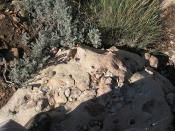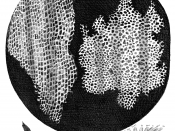Robert Hookes geology relates to his studys in fossils and earthquakes, and he also mastered the cardinal principle of paleontology. Which was the fact that fossils were not a piece of nature that just came about, yet they were remains of a once living organism. Throughout this essay, many facts will be explained of what kind of contributions Hooke put into the field of geology. Including discriptions of other planet studies from his resources.
Many had theories were said about fossils, one well rounded theory back then was that fossils grew with the earth and were made the way they were found. A special stone that looked like a living being but was not around, some type of creature that was unknown and mysterious to all people. After an arguement about this issue, Martin Lister said "our English Quarry-shells were not cast in any Animal mold, whose species or race is yet to be found in being at this day."
They brang up the fact of extinction at the time, but most of civilization was not accepting this statement of the fossils being remains of extincted living organisms.
After Hooke studied the fossils with microscopes, which was the first time anyone ever tried that, discovered that there were similarities to petrified wood and fossil shells. The petrified wood was soaked with a type of water which gave it, its condition. Then Hooke proved the cardinal principle of paleontology, which said that fossils were actually from living organisms before our age. Not just some fixture that was built into Earth.
The explanation for the earthquakes and fossils relating to them, is similar to do with the movement of canyons and forming many fossil pieces from old water spots that cleared out. All there is left now is old...


